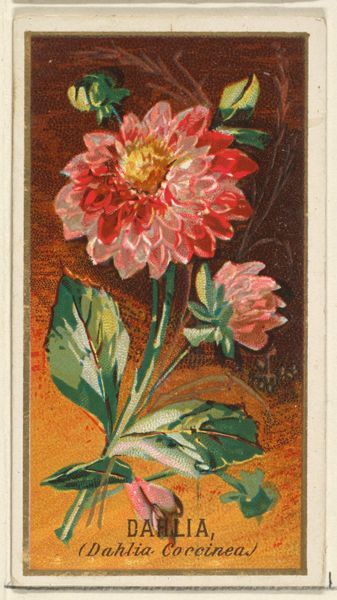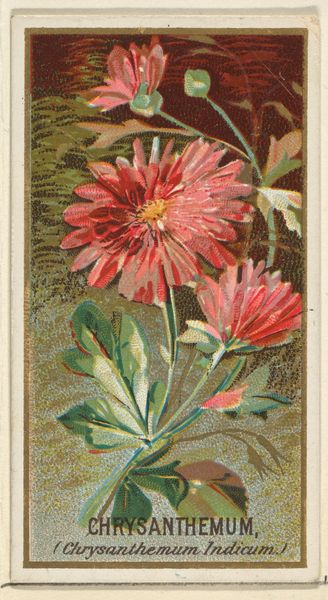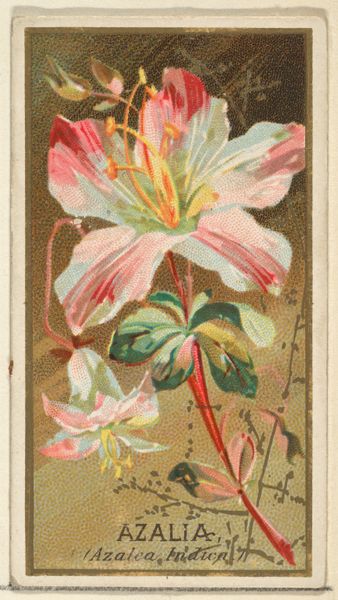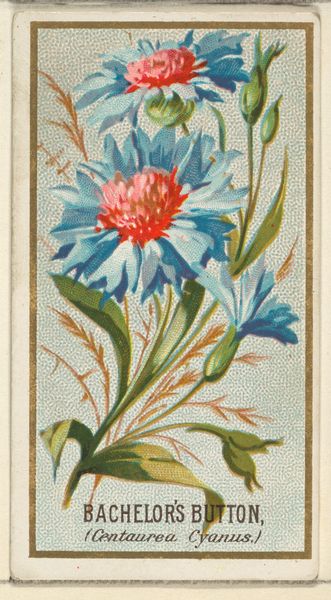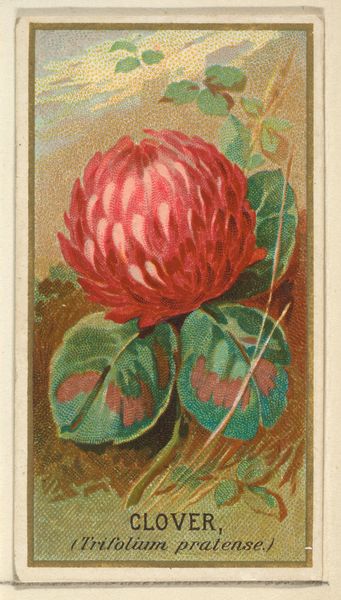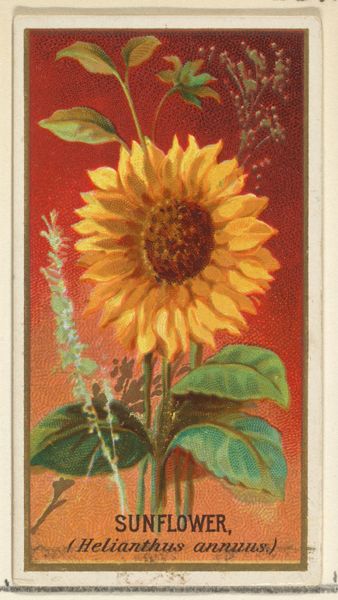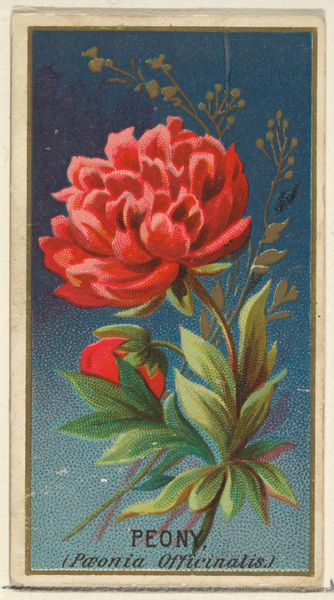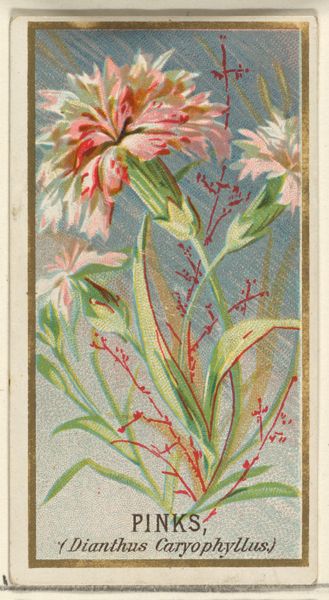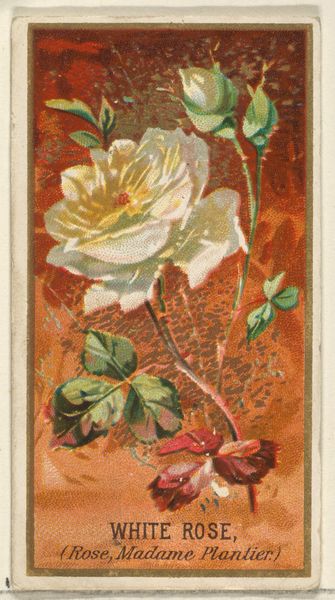
Water Lily (Nymphaea adorata), from the Flowers series for Old Judge Cigarettes 1890
0:00
0:00
Dimensions: sheet: 2 3/4 x 1 1/2 in. (7 x 3.8 cm)
Copyright: Public Domain
Editor: We are looking at "Water Lily (Nymphaea adorata)" from 1890, part of the Flowers series for Old Judge Cigarettes by Goodwin & Company. It's currently housed at the Metropolitan Museum of Art. I am really drawn to the way the colors almost vibrate with the pointillist technique. How do you interpret this work? Curator: Considering formal elements, observe the interplay of color and texture. The artist uses a restricted palette, focusing on variations of red, white, and green, applied with what appears to be small, deliberate strokes. This technique lends a vibrancy and shimmering quality to the depicted water lilies, activating the surface of the work. How do you think the arrangement of the water lilies in the pictorial space affects the overall composition? Editor: They seem to exist in different planes, but not exactly overlapping; creating a somewhat ambiguous pictorial space that draws you in. I think it makes it visually exciting. Curator: Precisely. The ambiguity disrupts a purely representational reading. Note the carefully balanced asymmetry. The two blooms anchor the composition, and the stems serve to disrupt a fully formal approach. The lilies’ arrangement compels the viewer's gaze, guiding it through the subtleties of form and light. What does the visible surface treatment and its textural presence evoke to you? Editor: The visible brushstrokes remind me of Impressionism, maybe. The almost rough texture of the whole print, somehow captures light, giving the image a delicate quality. Curator: Indeed, it is through this articulation of form and the careful calibration of hue that the essence of the subject—its visual and haptic presence—is communicated to us. That is where the emotional impact lies. Editor: That makes so much sense. I hadn't considered how much the texture contributes to its emotional appeal. Curator: Examining the piece through its structure, we come to better appreciate its expressive effect. A very productive exchange.
Comments
No comments
Be the first to comment and join the conversation on the ultimate creative platform.
